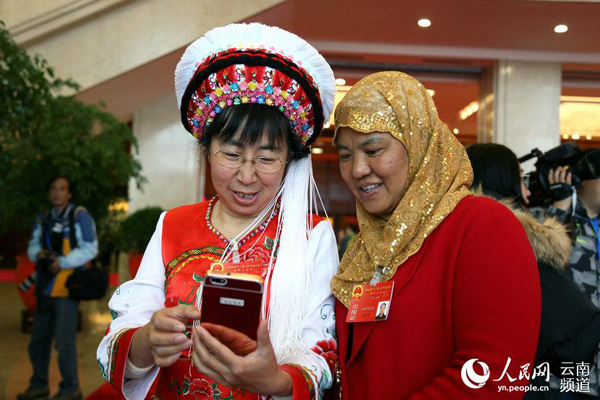Increasing children of Tibetan farmers and herdsmen accessible to colleges
According to the Fourth Session of the Tenth Tibet People's Congress which closed on Jan. 31, about 74.5 percent of children of Tibetan farmers and herdsmen got admission to colleges and universities via the college entrance examination in 2015.
Lhamo, a 21-year-old girl from Namling County, Shigatse City of Tibet, was admitted by a normal university last year, finally realizing her long harbored dream. “As a native-born girl from a rural family, I was really happy to be admitted by a university. Thanks to the country's subsidy policy, I can smoothly study in the university,” she said.
Currently, the special enrollment programs of the country and key colleges and universities and those for the rural students have been implemented in the plan of enrollment via ordinary college entrance examination in Tibet. The admission rate of the students from the families of farmers and herdsmen in the Tibetan classes of the secondary schools in the hinterland of China is maintained at 70 percent.
Since 1985, Tibet Autonomous Region has implemented the policy of providing free catering, accommodation and tuition for children of farmers and herdsmen on the basis of free compulsory education. At present, the policy has been extended to 15 years, and the standard increased to 3,000 yuan (456 US dollars) per capita annually. A total of 525,000 students have been benefited.
So far, a complete modern education system has been initially established in Tibet, covering the preschool education, basic education, vocational education, higher education, adult education, special education, etc.
Recent years have also seen continuous improvement in the public cultural service system. So far, the system has basically covered the whole region, with the services available at four levels, i.e. the regional, prefectural, county and township levels.
“There have been libraries, art centers and museums in prefectures (cities), folk art troupes in counties and comprehensive cultural centers in townships in Tibet. Over 1,600 cultural plazas have been built for the wide dissemination of excellent public cultural resources,” said Nyima, head of the Social Culture Division of the Culture Department of Tibet Autonomous Region.
Your Comment
Name E-mailRelated News
-
;
-
-
Obama pledges 4.2 bln dollars for computer science education
U.S. President Barack Obama has pledged over 4.2 billion U.S. dollars in funding to expand computer science education in the country's schools.
-
-
-
China, S. Korea, Japan Education Ministers Meet for First Time
AphotoshowsEducationMinistersfromChina,SouthKoreaandJapanposesforphotoinSeoul.[Photo:cri.cn]EducationMinistersfromChina,SouthKoreaandJapanhavesatdownthisweekendfora3-waymeeting.
-
-
-

-
Dechen and Nujiang will implement 14 years of free education
In Yunnan, Dechen and Nujiang will be the first to implement 14 years of free education all the way from pre-school through high school.
-
Based in Lhasa, Tibet Vista is a Tibet travel agency that specialized in Tibet permit, and Tibet tours for both private and group travelers at a local price!
•4 Days Lhasa City Group Tour from USD 460 •8 Days Everest Base Camp Group Tour from USD 850 •15 Days Mt.Kailash Group Tour from USD 1780 •2016 Tibet Train Tours from Beijing, Shanghai, Chengdu, Xining,etc










